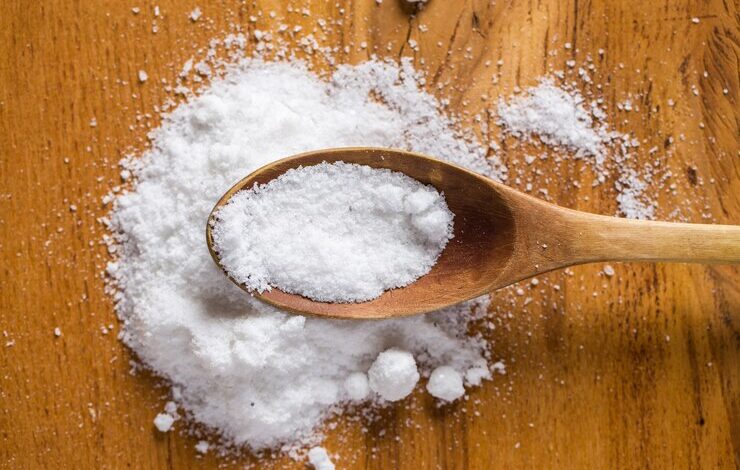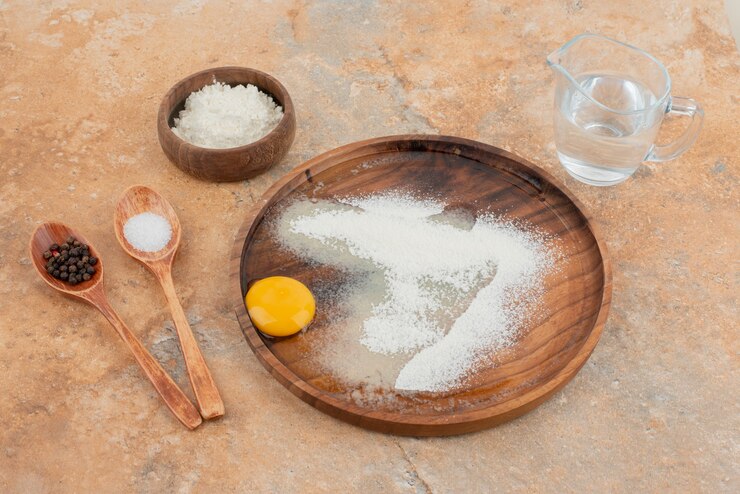Essential Flavors: Cooking Salt Exporter in India

Salt, an indispensable element in kitchens worldwide, holds a significant place in culinary traditions and everyday cooking. In India, renowned for its diverse culinary heritage and abundant natural resources, the production of cooking salt is a meticulous process that ensures purity, quality, and flavor enhancement. This article delves into the journey of cooking salt from its extraction to the export markets, highlighting the processes involved and the best cooking salt exporter in India to delivering essential flavors to global tables.
Introduction to Indian Cooking Salt Production:
Cooking salt, also called table salt or culinary salt, is a vital ingredient for food preservation and flavour enhancement. It is produced in India using a combination of traditional and modern methods for both local consumption and export to other countries.
Sourcing Raw Materials:
The initial step in the production of Indian cooking salt is the careful selection of raw materials. The primary sources of saline water or brine are inland salt lakes and coastal areas. These locations are chosen because of their high salinity levels, which aid in the evaporation process required to extract salt crystals.
Extraction Methods
Coastal Regions:
- Collection of Seawater: Along the expansive coastline of India, seawater is collected in large reservoirs or pans designed for salt production.
- Natural Evaporation: The collected seawater is left to evaporate naturally under the sun. As the water evaporates, it leaves behind crystallized salt, which gradually accumulates at the bottom of the pans.
- Harvesting: Once sufficient evaporation has occurred and salt crystals have formed, skilled workers carefully harvest the salt using traditional tools such as wooden rakes or shovels. This manual harvesting process ensures that the salt retains its natural purity and flavor.
Inland Regions:
- Brine Extraction: Inland salt lakes, such as those in Rajasthan, provide saline groundwater (brine) for salt production.
- Evaporation Ponds: Brine is pumped into large evaporation ponds where it is exposed to the sun. Similar to coastal regions, natural evaporation concentrates the salt content, allowing crystals to form and accumulate.
- Collection and Processing: Once the salt crystals have formed, they are collected, washed to remove impurities, and processed further to achieve the desired quality and purity.

Refinement and Processing
After harvesting, the raw salt undergoes a series of refining processes to ensure it meets food-grade standards:
- Washing: The harvested salt crystals are washed to remove residual impurities, dirt, and other particles.
- Drying: Cleaned salt is dried under controlled conditions to reduce moisture content and improve storage stability.
- Screening and Sorting: Salt crystals are screened to achieve uniform size and sorted according to quality parameters.
- Additives (optional): Some cooking salts may undergo iodization or addition of anti-caking agents based on regulatory requirements and consumer preferences.
Quality Assurance
Quality assurance is a critical aspect of cooking salt production in India:
- Testing: Samples from each batch of salt undergo rigorous testing for purity, moisture content, and compliance with food safety standards.
- Certifications: Manufacturers ensure their products meet certifications such as FSSAI (Food Safety and Standards Authority of India), ISO, and other relevant quality marks.
Environmental Considerations
Indian cooking salt exporters are increasingly adopting sustainable practices:
- Water Conservation: Efficient water usage practices to minimize environmental impact.
- Energy Efficiency: Optimization of energy consumption during salt production processes.
- Waste Management: Implementation of eco-friendly waste management practices to reduce environmental footprint.
Export Markets and Distribution
Indian cooking salt, renowned for its purity and essential flavors, is exported to a diverse range of international markets:
- Global Reach: Export destinations include countries in Asia, Europe, North America, and beyond, where Indian cooking salt is valued for its quality and reliability.
- Packaging and Logistics: Products are packaged in various sizes and formats suitable for retail, industrial, and foodservice applications. Packaging ensures product integrity and meets international shipping standards.
Conclusion
In conclusion, exemplifies India’s commitment to producing high-quality cooking salt for global markets. Through a combination of natural resources, traditional craftsmanship, and modern production techniques, Indian exporters uphold stringent quality standards while meeting diverse consumer demands worldwide. As the culinary landscape continues to evolve, Indian cooking salt remains a cornerstone ingredient, enhancing flavors and preserving culinary traditions across continents.
FAQs
What makes cooking salt from India unique? Cooking salt from India is renowned for its purity, natural flavor, and rich mineral content. Sourced from pristine coastal areas and inland salt lakes, it undergoes meticulous production processes to ensure high quality.
How is cooking salt produced in India? Cooking salt in India is primarily produced through natural evaporation of seawater or saline groundwater. The water is collected in pans or reservoirs, allowed to evaporate under the sun, and the resulting salt crystals are harvested and processed.
What are the different types of cooking salt exported from India? India exports various types of cooking salt including iodized salt, sea salt, rock salt (Himalayan salt), and specialty salts with added flavors or minerals. Each type caters to different culinary preferences and health considerations.
What quality standards do cooking salt exporters in India adhere to? Cooking salt exporters in India adhere to stringent quality standards set by regulatory authorities. These standards ensure purity, iodine content (for iodized salt), and compliance with food safety regulations.
Are Indian cooking salt exporters environmentally conscious? Yes, many Indian cooking salt exporters prioritize sustainable practices. This includes efficient water usage, minimizing energy consumption during production, and implementing eco-friendly waste management strategies.
Where is Indian cooking salt exported? Indian cooking salt is exported to various countries globally, including neighboring South Asian countries, Middle Eastern nations, Africa, Europe, and North America. Its export quality is highly regarded for its purity and reliability.
What are the health benefits of consuming Indian cooking salt? Indian cooking salt is rich in essential minerals like iodine, which is important for thyroid health. It also contains trace minerals that contribute to overall well-being and electrolyte balance.
How can consumers identify high-quality Indian cooking salt? High-quality Indian cooking salt is typically labeled with certifications such as FSSAI (Food Safety and Standards Authority of India), ISO, and other relevant quality marks. These certifications ensure the salt meets stringent safety and purity criteria.
Can consumers purchase directly from cooking salt exporters in India? Yes, some cooking salt exporters in India offer their products through retail outlets, supermarkets, and online platforms. Consumers can also contact exporters directly for bulk orders or specific inquiries.
How does cooking salt production contribute to India’s cultural heritage? Cooking salt production in India, particularly in coastal regions like Gujarat and Tamil Nadu, has deep cultural roots. It preserves traditional harvesting methods and sustains livelihoods in coastal communities, thereby enriching India’s cultural diversity.



